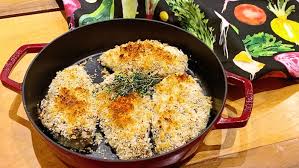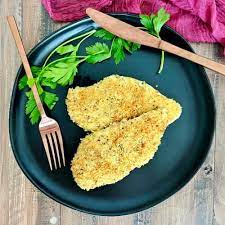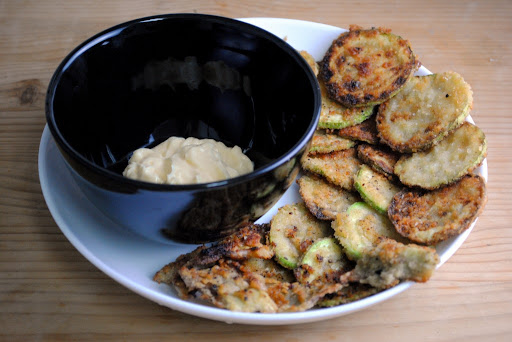Mayo is an essential ingredient in the kitchen, but many people think of it as just a sauce. However, Mayo is an excellent flavor enhancer and texture enhancer, especially when used to bread vegetables.
Why Is It Effective To Spread Mayo On Vegetables?

The answer lies in Mayo’s ingredients and their compatibility with vegetables. Since Mayo contains oil and eggs, it mixes well with vegetables, giving you a unique crunchy texture. In this article, we will introduce you to the special role of Mayo, what vegetables go best with Mayo, and the best ways to use Mayo. The Structure of Mayo and its Influence on the breading process The main ingredients of Mayo, oil and egg yolk, provide an excellent base for the breading process.
The oil crisps the outer layer of vegetables when exposed to heat during cooking and the egg yolk helps the breading mixture to adhere well to the vegetables. Mayo has a higher consistency than traditional egg and flour mixtures, so it adheres better to the surface of the vegetables, creating a denser breading.
The sour component of Mayo brings out the natural flavor of the vegetables and deepens the flavor of the breadcrumbs. The breading method that brings out the flavor of vegetables Mayo Among the breading methods for vegetables, Mayo is unique in terms of flavor.
The creamy texture of Mayo enhances the appeal of vegetables and can encourage children in particular to eat them. Mayo brings out the natural flavor of vegetables and adds a hint of salt. For example, adding Mayo to vegetables such as potatoes and zucchini will make them crispy on the outside and soft on the inside. This preserves the nutritional value of the vegetables and makes them more flavorful.
The Harmony of Mayo and Vegetables: Which Vegetables Should It Be Paired With?

Mayo goes well with a variety of vegetables, but some vegetables look even more delicious this way. Vegetables such as potatoes, cauliflower, zucchini, and mushrooms are great when breaded in Mayo. Potatoes absorb Mayo best with their fatty texture, while cauliflowers’ curved texture holds Mayo easily and retains the perfect crunch when baked in the oven.
Zucchini balances the creamy texture of Mayo with its natural moisture for a light, crunchy finish. Mushrooms, on the other hand, have an intense burst of flavor when breaded with Mayo due to their natural texture. Adding Mayo to different types of vegetables gives them different flavors and textures, adding variety to your dishes.
Tricks for breading vegetables with Mayo it may seem easy to bread vegetables with Mayo, but there are a few things to keep in mind. First, make sure the vegetables are completely dry. If the vegetables are wet, it will be difficult for the Mayo to stick to the surface and it will be difficult to achieve the desired texture. Adding various spices to the Mayo will further enhance the flavor of the breadcrumbs.
For example, ingredients such as garlic powder, black pepper, chili flakes, and parmesan cheese can be added to increase the flavor of the Mayo. When applying this mixture to the vegetables, make sure they are evenly breaded on all sides. After the paneling process is complete, you can cook the vegetables in the oven or in a frying pan to get a crispy appearance.
Mayo Breading Using Different Cooking Methods

Different methods can be used to prepare Mayo-breaded vegetables. Baking is one of the most common and healthiest methods. Roasting vegetables makes them soft on the inside and crispy on the outside. During the cooking process, the vegetables cook without absorbing much oil, resulting in lower calories. This is the best frying method for those looking for a richer, crunchier texture. When vegetables are breaded in Mayo and fried, they turn golden and have a crispy texture. However, vegetables cooked in this way contain a lot of fat, so you need to watch your calorie intake.
Grilling is also a popular method, especially in summer. Grilling gives vegetables a slightly smoky flavor, which gives them a different taste.
Healthy Alternative: Light Mayo Dressing
The high fat and calorie content of Mayo can be a concern in some cases. But you can simplify this method by using Light Mayo. Because light Mayo contains less fat than traditional Mayo, it offers a lower-calorie option while preserving the nutritional value of vegetables. Vegetables breaded with light Mayo also have a lighter texture and give the same crunch when cooked. For this reason, light Mayo is an ideal option, especially for dieters or those looking for a healthier alternative. By baking in the oven, you can enjoy vegetables in a healthy and delicious way with a light Mayo.
Flavor combination with sauce: What goes well with vegetables with Mayo?
Vegetables breaded in Mayo can be eaten as they are or as a delicious snack or side dish. But you can enhance the flavor even more by serving them with various sauces. A yogurt-based sauce creates a refreshing taste that balances the crunchy texture of Mayo-breaded vegetables. It goes well with vegetables like garlic yogurt sauce or lemon yogurt sauce. If you want a spicier flavor, try a spicy barbecue sauce or garlic aioli. Olive oil dressing with lots of fresh herbs brings out the natural flavor of the vegetables.
Served with cold drinks, especially lemonade or iced tea, Mayo-covered vegetables are a great summer snack.
Calories and Nutritional Value of Vegetables with Mayo
Vegetables with Mayo have a satisfying taste, but you need to be careful about calories. Using classic Mayo increases the calorie content of vegetables. The average serving of Mayo-breaded vegetables contains about 200 to 300 calories. However, you can reduce these calories by using a lighter Mayo. Vegetables cooked with light Mayo contain about 100 to 150 calories per serving.
The calorie count also depends on the type of vegetables used. For example, vegetables such as potatoes and cauliflower may be high in calories, while vegetables such as zucchini and mushrooms may be low in calories. It is therefore important to control the amount of Mayo-breaded vegetables and choose healthy cooking methods for a balanced diet.
How to Use Mayo For Breading Vegetables Recipe
Add flavor to your meals with Mayo-breaded vegetables. Mayo is a creative and tasty alternative to vegetable breading. This method will make the vegetables crunchy and delicious, adding a different flavor to your table.
Mayo-breaded vegetables can be baked, fried, or grilled in a variety of ways to create a healthy and filling snack. You can make this method healthier by using lighter options such as light Mayo or varying the flavor with different sauces. The Mayo breading brings out the natural flavor of the vegetables and brings out their appeal, adding a new flavor to dishes and is especially suitable for those who don’t want to eat vegetables. Add this delicious and practical recipe to your table and surprise your family and guests.
